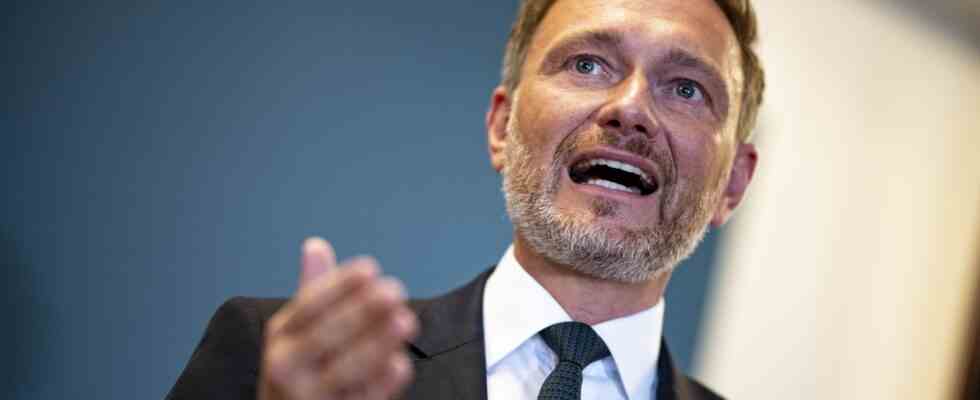Status: 07/21/2022 2:35 p.m
The markets have long anticipated the interest rate decision by the ECB. Interest rates have been rising for months. This has consequences for politics – and for Finance Minister Lindner’s budget.
For investors, the long-standing low interest rate policy of the ECB was a drama. But the federal finance ministers had reason to be happy: Despite mounting debts, the interest burden in the federal budget fell significantly – from up to 40 billion euros in 2008 to just four billion euros last year.
But with the turnaround in interest rates, the trend is reversing: Finance Minister Christian Lindner expects expenditure of 16 billion for federal loan financing this year, and even 30 billion in 2023. The FDP minister says that “a steep wall is building up in front of the federal budget”.
Some political observers have already said that Lindner is exaggerating in order to fend off spending requests from other ministries. But it has long been evident that the turnaround in interest rates is actually having a massive impact on the budget.
Three Factors
In principle, three factors play a role in the costs for the federal government: on the one hand, the annual interest payments for federal bonds or other federal securities. It’s a fairly stable post, explains Tammo Diemer, chief executive of the German Finance Agency – which is responsible for federal debt management. Around 13 billion euros were due for this part in 2021, and not much will change here for the time being.
The situation is different with the second item: the federal government has issued bonds whose interest rates are based on the level of inflation. In view of an inflation rate of currently 7.6 percent, the federal government is facing significant additional expenditure. Although the payments are only due at the end of the term of the corresponding bonds, the federal government has to set aside money for this every year. While one billion euros was estimated for the inflation-indexed bonds last year, 7.6 billion are likely to be due in the coming year.
The so-called premium effect
But then there is a third item – and this is where the turnaround in interest rates is most noticeable. This is pointed out by Peter Barkow, founder of the analysis and data house of the same name for the financial sector: Since the beginning of the low-interest phase, the federal government has not only benefited from the low interest rates, but also from one-off profits from the issue of new federal bonds.
Since these securities still had negative yields until recently, the federal government received more money from investors than it had to repay at the end of the term. Experts speak of an agio effect here. “According to our calculations, 46 billion euros have been booked in the last ten years,” says Barkow. As a merchant, you would spread this special income over the term of the bonds. However, this is not provided for in the federal accounts, the so-called cameralistics. With this special income, budget gaps of the past years could be compensated.
Negative business for the federal government
But that’s over. Because this additional income – in 2021 alone it was 13 billion euros – only accrued as long as the returns were negative. “With the positive yield environment, the effect is reversed,” says Diemer from the German Finance Agency. The Minister of Finance is currently paying more when issuing new bonds; especially when the federal government tops up bonds from previous years that have a zero-interest coupon – which means they continue to earn no interest. Investors buy these stocks for the yields other securities in the market can offer, but only at a discount.
For the federal government, this is a negative business, as Diemer admits. But it is also important to top up on older bonds in order to keep federal bonds attractive to investors in the long term – and it plays a major role “that the outstanding bonds are and remain excellently tradable.”
Lower financing costs
Attractiveness is just another word for favorable conditions. Because the stronger the demand for federal bonds, the lower the financing costs for the federal government.
Despite the turnaround in interest rates, the yield on ten-year federal bonds, at just under 1.3 percent, is still significantly lower than the yield on comparable bonds from other countries. And so Lindner can also count on lower financing costs in his household than most of his counterparts.

